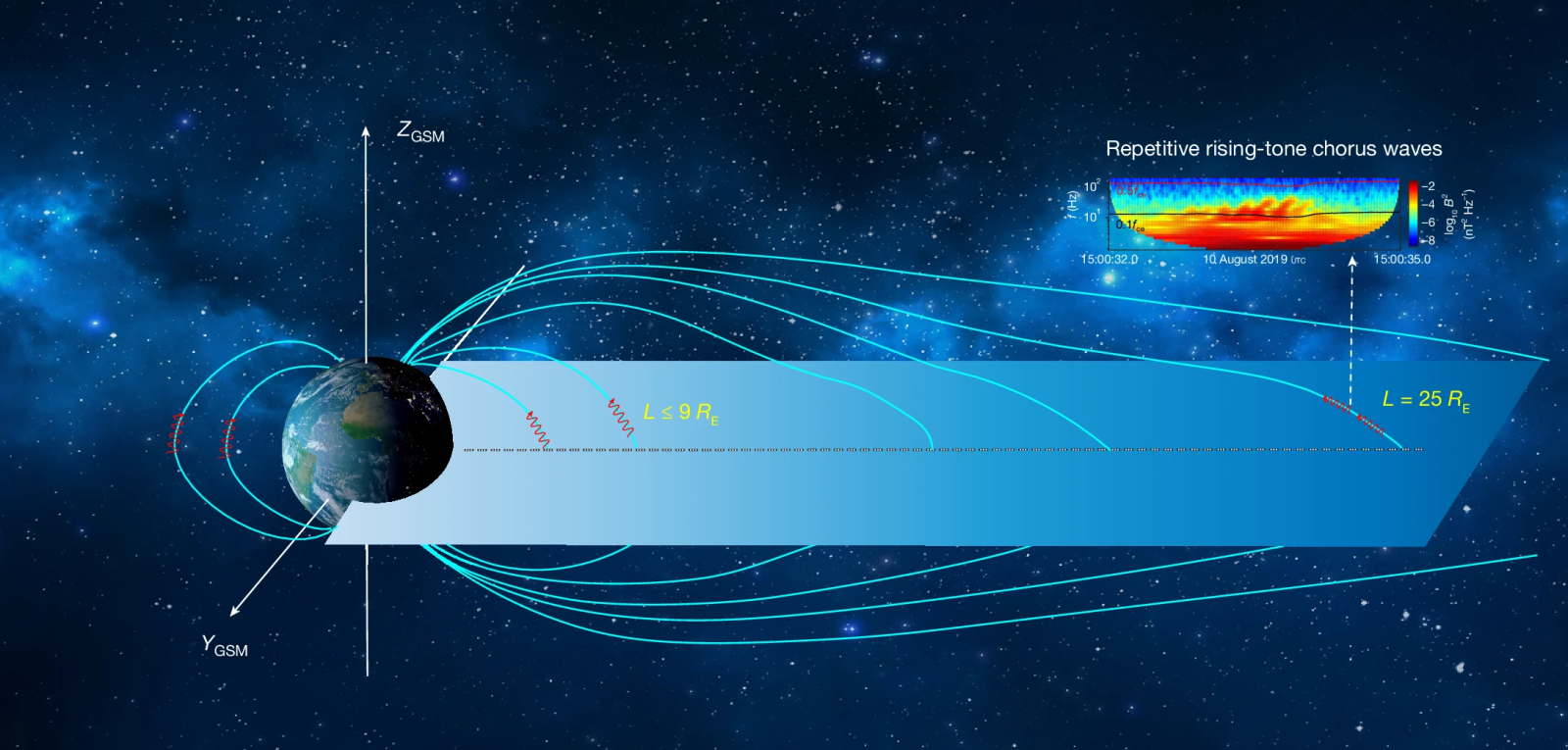Follow us on Google News (click on ☆)
A magnetic symphony: what are chorus waves?
Chorus waves are electromagnetic oscillations traveling along the Earth's magnetic field lines. When converted into sound, they produce a high-pitched trill reminiscent of bird songs. This phenomenon, beyond its unique sound, plays a key role in the interactions between the Earth's magnetic field and space particles.

Chorus waves have so far been observed only near Earth, where the magnetic field is dominated by a dipolar field. The latter introduces strong inhomogeneities in the global magnetic field, which are thought to be linked to the generation and propagation of chorus waves. In this study, MMS observed a chorus wave where the magnetic field is elongated and stretched, rather than dipolar.
These waves influence Earth's radiation belts, which protect our planet from solar storms while sometimes generating high-energy electrons, nicknamed "killer electrons," capable of severely damaging satellites and space equipment.
A distant and unexpected discovery
Until now, these waves had been detected about 51,000 kilometers (31,700 miles) from Earth. A recent study, led by Beihang University in China and using NASA's Magnetospheric Multiscale (MMS) satellites, revealed their presence more than 100,000 kilometers (62,000 miles) away, in a region where their formation seemed unlikely.
These satellites, launched in 2015, explore regions of Earth's magnetic field where forces are particularly distorted, especially in the magnetic tail. This technological advancement has made it possible to capture these waves with unprecedented precision, thereby expanding our understanding of space dynamics.
Why is this important?
The discovery could transform the forecasting of space phenomena. By studying these waves in remote regions, scientists hope to anticipate their impacts on space and terrestrial infrastructure, such as satellites and communication systems.
Moreover, chorus waves, already observed around planets like Jupiter and Saturn, could exist in other regions of space with a magnetic field. This hypothesis raises new questions about plasma physics throughout the solar system and could help protect space exploration missions from the effects of radiation.
Towards a better understanding of the Universe
By revealing previously unknown mechanisms in the formation of chorus waves, this study invites a rethinking of current models. It also highlights the importance of advanced technologies, such as MMS satellites, for exploring the far reaches of Earth's magnetic field and, potentially, other regions of space.
This advancement is not only interesting from a scientific perspective, but it could also influence future strategies to ensure the safety of manned missions to Mars and beyond. The mystery of cosmic songs is just beginning.
To go further: What are killer electrons and why are they dangerous?
Killer electrons are high-energy particles accelerated by phenomena such as chorus waves. When they reach extreme speeds, they can interact with satellites and other space equipment, damaging or destroying them.
These electrons are mainly found in Earth's radiation belts. Although they protect the planet from solar radiation, they can create a dangerous environment for human technology in space.
Studying them allows us to better understand how chorus waves, through their interactions with particles, modify the energy levels of electrons. These discoveries are important for the safety of future space missions.
Scientists are now seeking to predict the activity of killer electrons to protect astronauts and satellites from increased radiation risks, depending on observed space events.